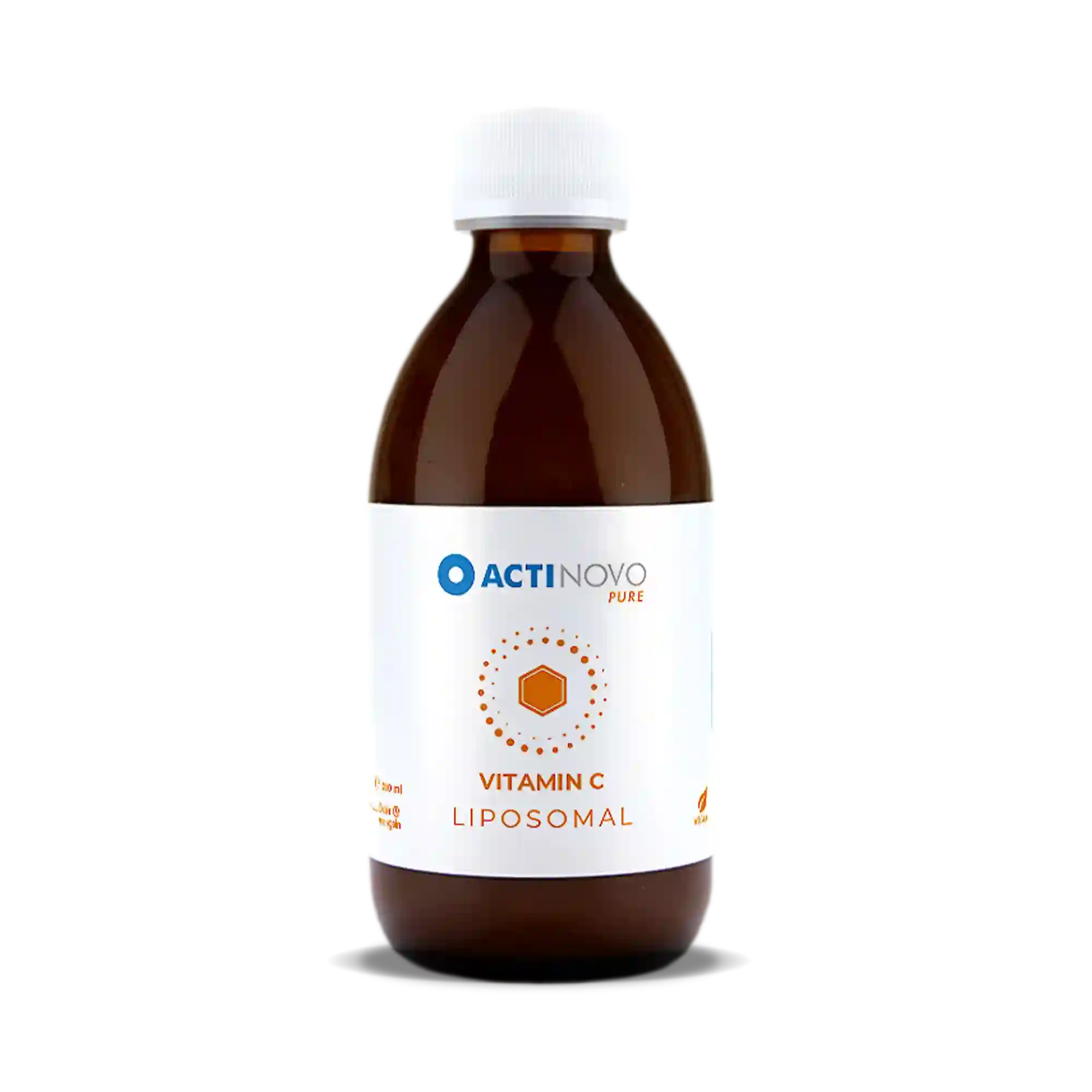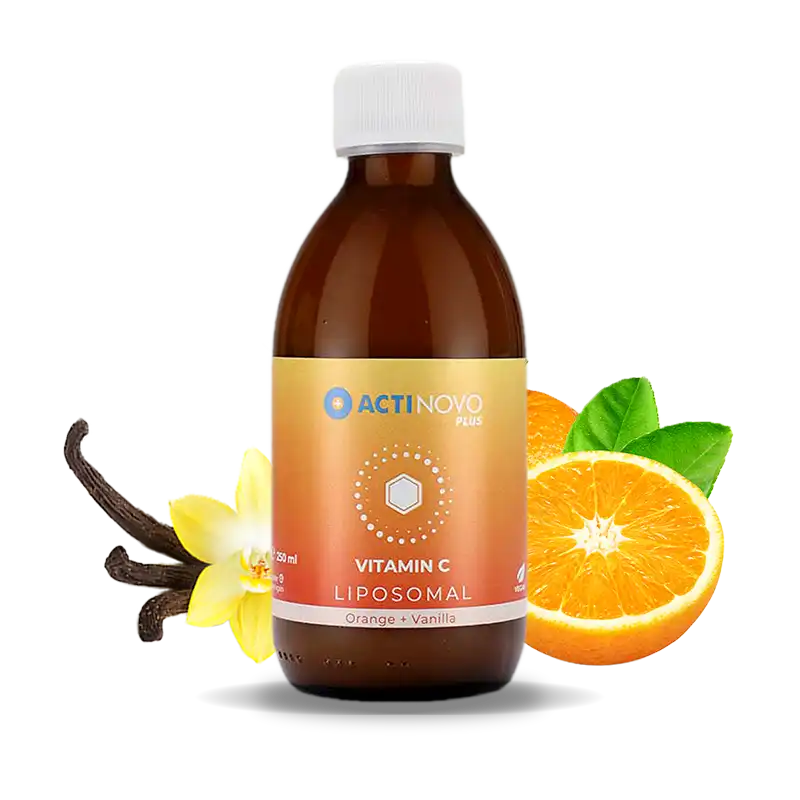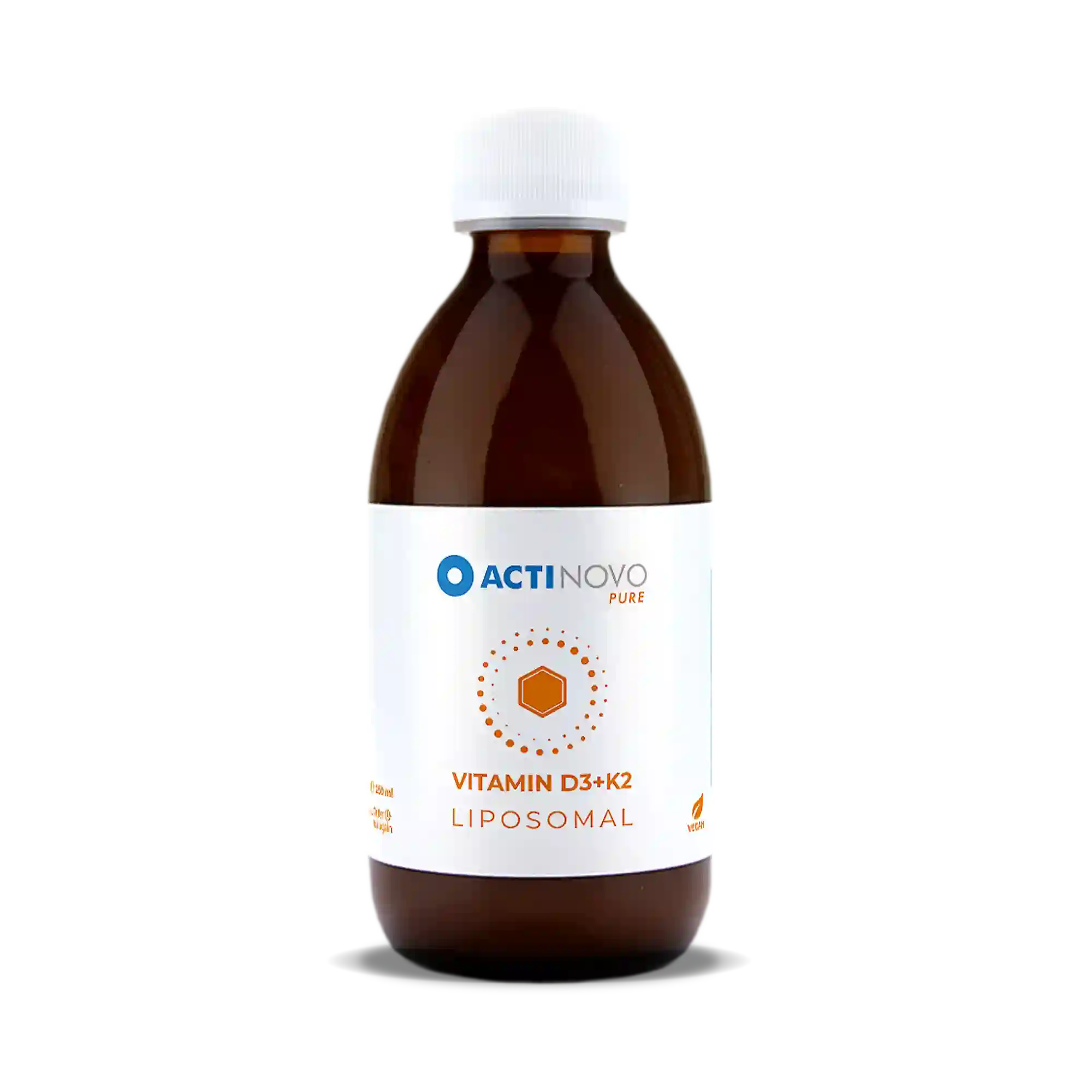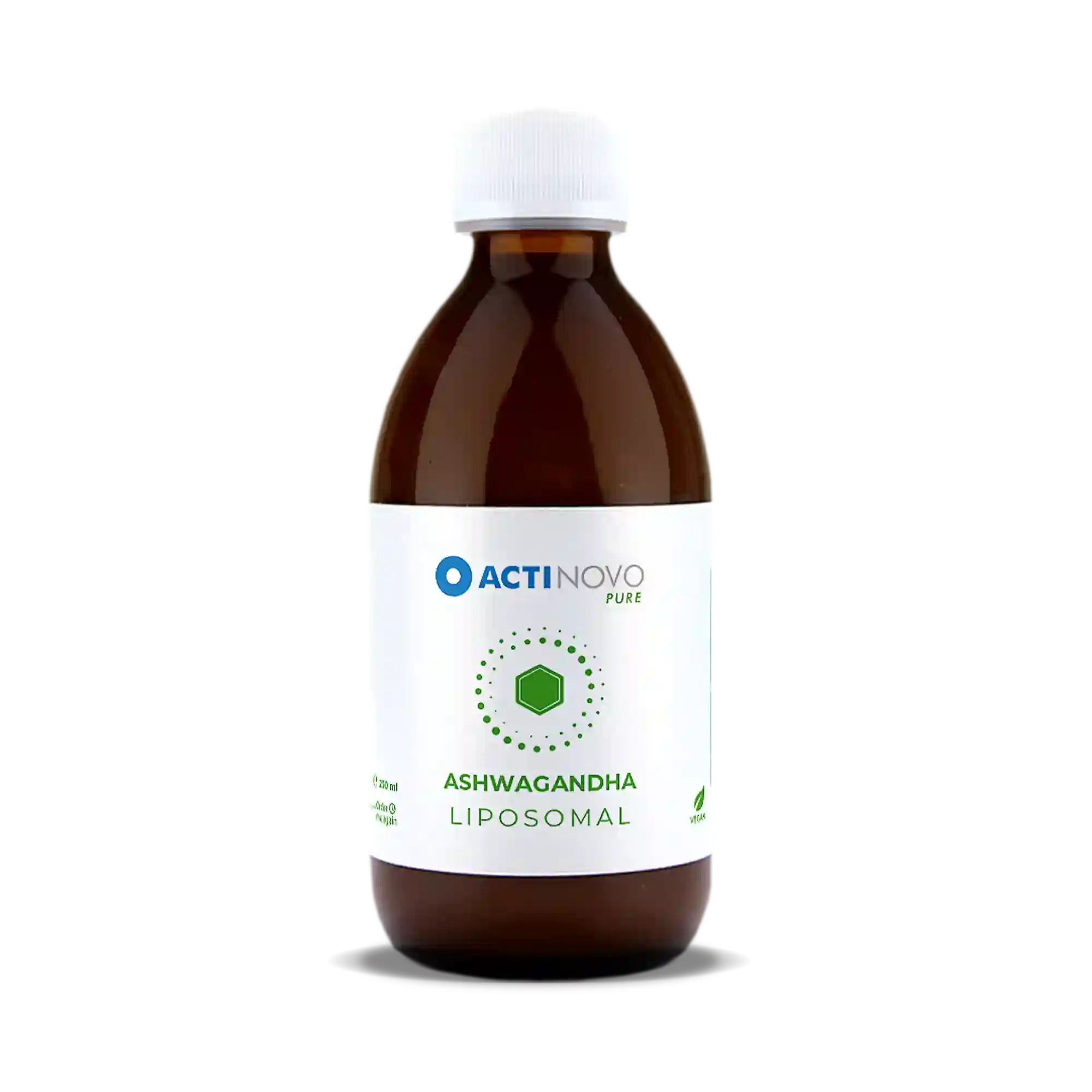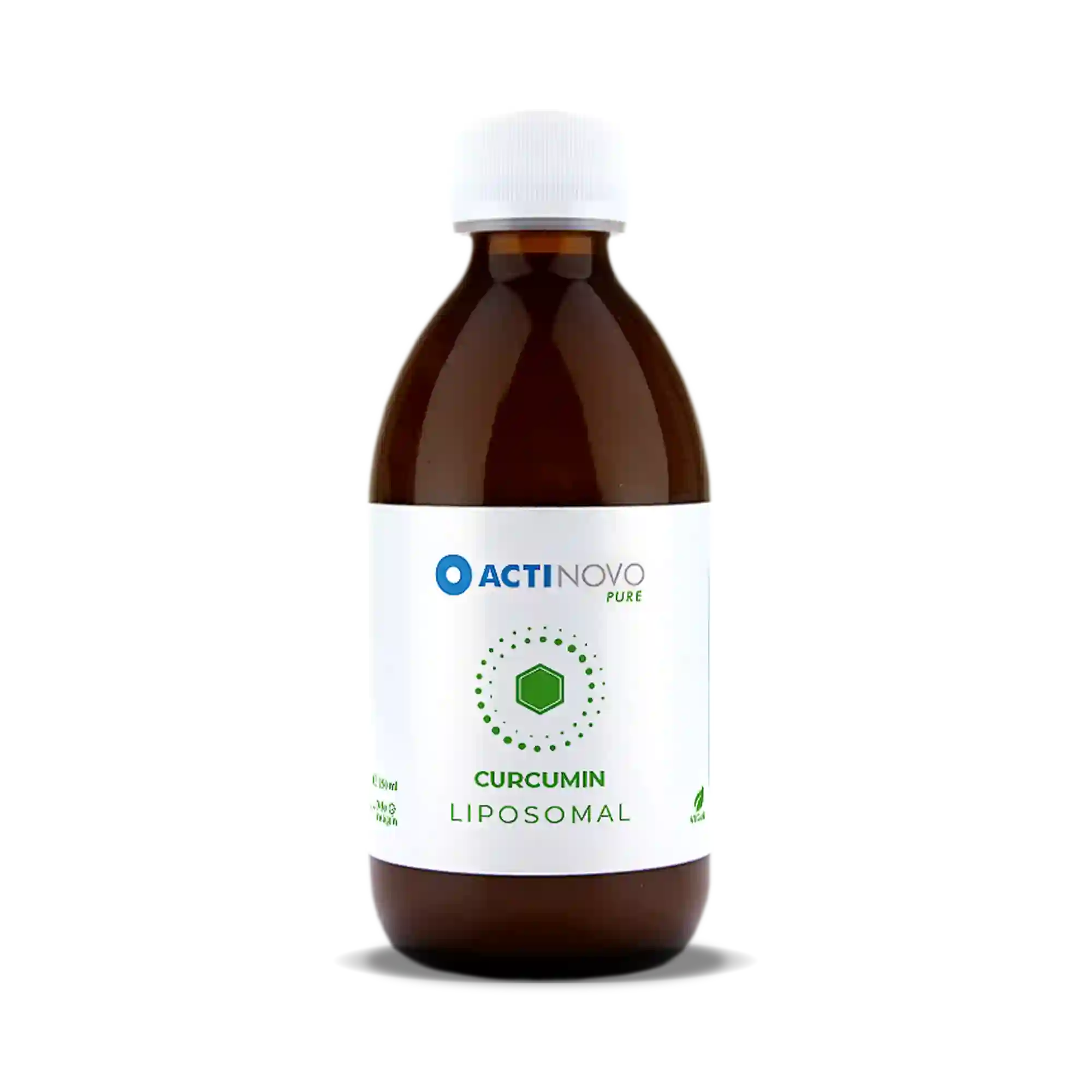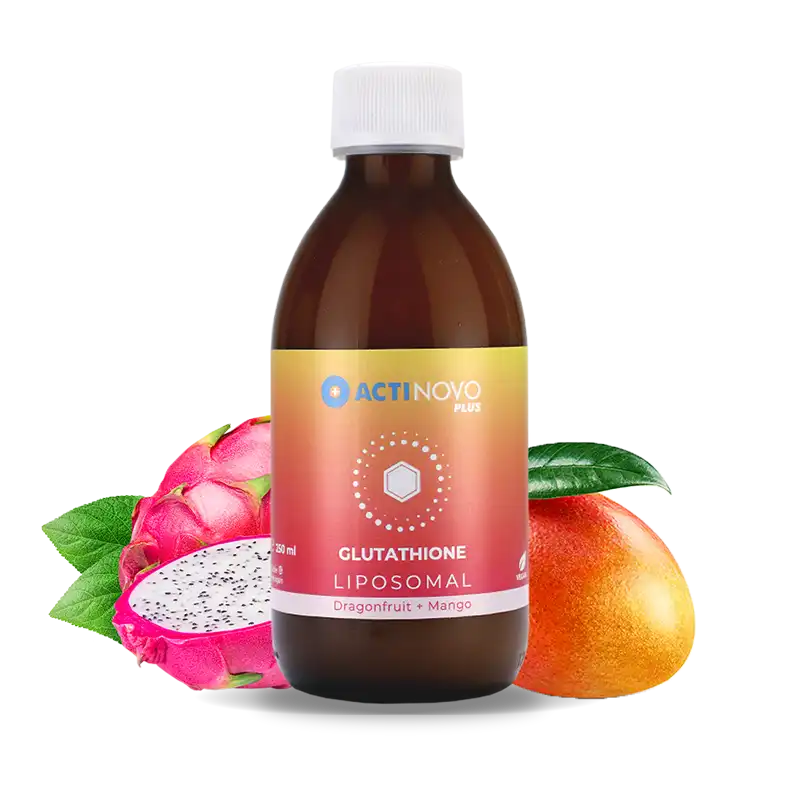
Liposomal liquid vs. lipid powder - The Comparison
What will you learn in this guide?
1. Have you ever tried liposomal powder? Neither have we...
2. What are liposomes?
3. What are phospholipids?
4. How is a liposome formed?
5. How are liposomal powders manufactured?
6. The Transport of Active Substances in the Body.
7. ActiNovo Studies
8. Test winner: Liquid liposomal vitamin C from ActiNovo
1. Have you ever tried liposomal powder? Neither have we...
Why do we at ActiNovo only offer products in liquid form? Are powder preparations just as effective as liquid preparations? The answer, based on scientific research, is no.
To understand why there are no liposomal powders, we will explain what liposomes are, how they are made and what their normal function is.
2. What are liposomes?
Simply put, liposomes are lipid vesicles of phospholipids strung together. This formation creates a double membrane, which is what makes it possible to encapsulate a nutrient in the first place.
The double membrane formation is so special because this structure is present in almost all cell membranes of the human body.
3. What are phospholipids?
The name itself gives the first clue: phospholipids are attached to a phosphate group.
Phospholipids have 1. a water-loving (hydrophilic) head and 2. a fat-loving (lipophilic) tail! This property of the phospholipid structure allows mediation between water-soluble and fat-soluble substances.
The body can make its own phospholipids naturally, and phospholipids are found in food. For example, lecithin (which is largely composed of phospholipids) is used in the manufacturing of ice cream, where fat and water are mixed. Lecithin is often used as an emulsifier in foods to allow water and fats to combine smoothly.

4. How is a liposome formed?
By supplying a special kind of energy, the phospholipids arrange themselves in the formation of double membranes. The fat-loving tails are directed inward and the water-loving heads are directed outward toward the surrounding water solution. In order for phospholipids to arrange themselves, they must be in water. Only then will the phospholipids naturally form a spherical shape. This reaction creates the liposome!
At ActiNovo, we use ultrasound as a gentle energy source to produce these liposomes. At this stage of production, we can pack active ingredients such as Vitamin C or Vitamin D3 into the vesicle. Our liposomes are surrounded by an aqueous solution that maintains the spherical structure and protects the active ingredient.
As basic building blocks for our products, we use 96% pure phospholipids. We obtain these from European GMO-free sunflower seeds. This is the highest purity level available on the market.
5. How are liposomal powders manufactured?
To produce a powder formula, manufacturers first create standard liposomes encapsulated with an active ingredient. These vesicles are homogenized and transformed into a dry powder by freeze-drying or spray-drying. One advantage of these formulations is that they have long storage stability. The question arises: do powder liposomal products on the market come at the expense of bioavailability, utilization of the encapsulated nutrient, and structure?
YES! Because liposomes can only exist in water.
Water creates a special pressure inside and around the vesicle that holds the membrane in place. If water is removed, it cannot maintain its three-dimensional shape. This leads to a loss of the structural shape.
This means that liposomal powders in the conventional sense do not exist. Although the basis of these "liposomal" powders are phospholipids, no spherical phospholipid bilayer forms around the active ingredient.
Once the products are freeze-dried into a powder, the phospholipids "stick" to the active ingredient in a disordered fashion. Therefore, the term lipid powder is probably a more appropriate description. We show you a direct comparison:

The pictures show the difference: The vesicle in water has a perfect, spherical shape due to the water pressure. The image of the powdered formula, on the other hand, consists only of dried phospholipids and active ingredients. Compared to intact liposomes, the bioavailability of powdered formulas in water is much worse.
In the absence of water, the liposome ruptures, disintegrates and shows no normal function.
6. The Transport of Active Substances in the Body
The structure of liposomes is the same as that of a human cell. The chemical law of nature applies:
"like mixes with like".

Liposomes fuse with our human intestinal cells, as both are composed of phospholipids. This allows the intestine to transport the active ingredient unhindered into the bloodstream.
With tablets or powders, the active ingredients must be absorbed via osmosis or other transport channels. The digestive tract can be a hostile environment for conventional supplements. Active ingredients that are sensitive to stomach acid or digestive enzymes are poorly absorbed because they do not enter the bloodstream. For example, glutathione, which is almost not absorbed at all as a powder or capsule, can be absorbed up to 63 times better orally as liposomal liquid glutathione.
Liposomes are able to bypass these obstacles in the digestive tract. Thus, they keep the active ingredient safe and deliver it efficiently to the cells and into the bloodstream. The only other way to ensure maximum absorption is by intravenous injection. However, this can be expensive and inconvenient and requires the input of physicians!
No liquid = no advantage of liposomal nutritional supplements.
While powders can increase the bioavailability of the active ingredient, liposomes that are not intact cannot. This reduces the effectiveness of the powder. In addition, powders are much more expensive than true liquid formulations and are not well absorbed by the body!
7. ActiNovo Studies
Comparing the three forms, liposomal powder, the classic tablet and the liposomal liquid form, a study shows the difference: liquid supplements prevail with their unbeatable effectiveness over conventional tablets and the powder form!
The powder product actually performs the worst in the overall comparison and is the least effective even compared to conventional tablets.

- LLA = ActiNovo's liposomal liquid vitamin C
- LLB = Competitor's liposomal liquid vitamin C
- PL = Liposomal powdered vitamin C
- NL = Conventional vitamin C tablet
And why?
The vitamin C contained in a liquid liposome is well protected from the environment of the gastrointestinal tract. Thus, it is transported directly into our bloodstream, where it can immediately exert its antioxidant effect. One thing is certain: lipid powders are clearly inferior to liposomal supplements in water.
Would you like to learn more about our technology at ActiNovo? Then click here and inform yourself on our explanation page "What are liposomes".




